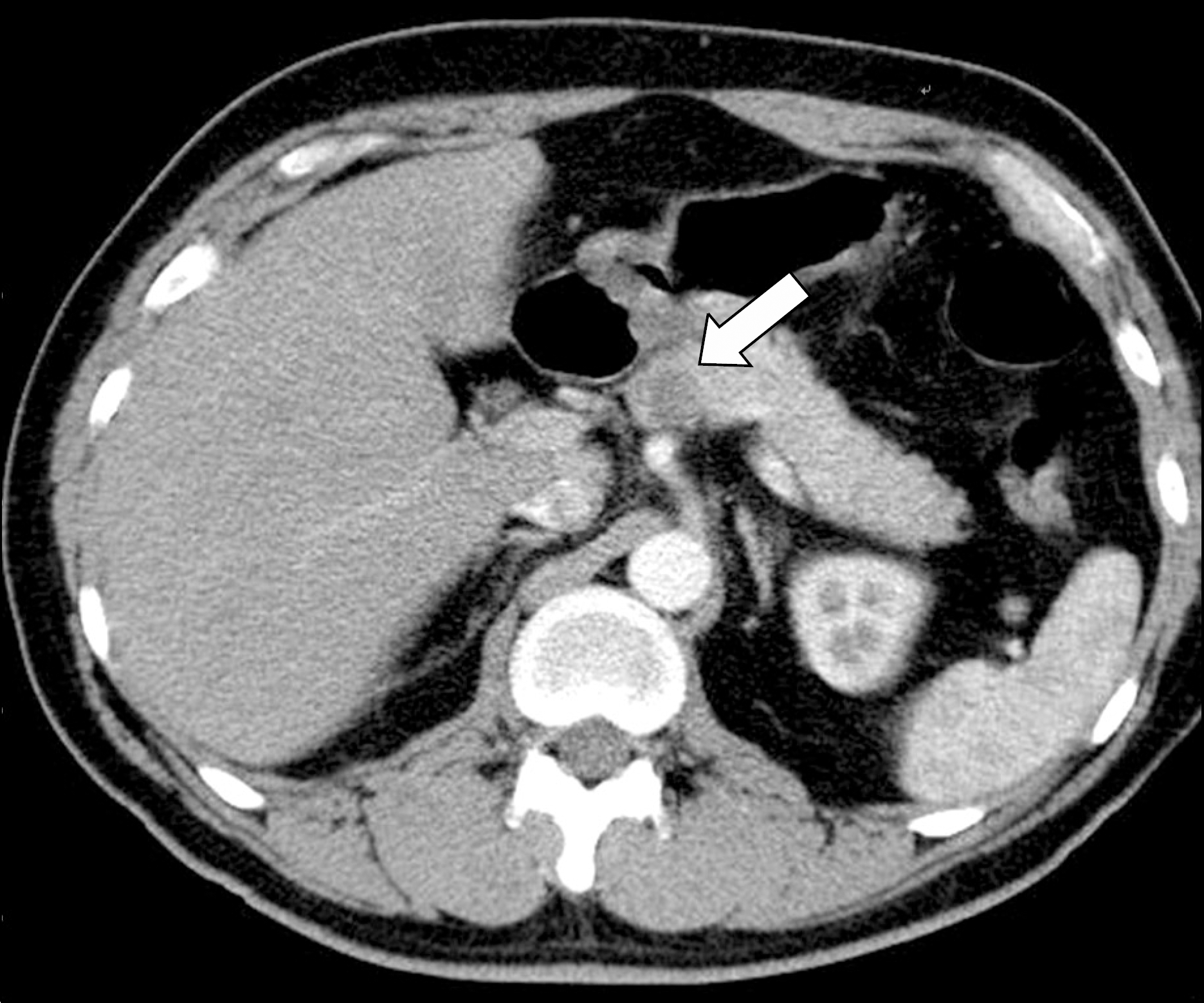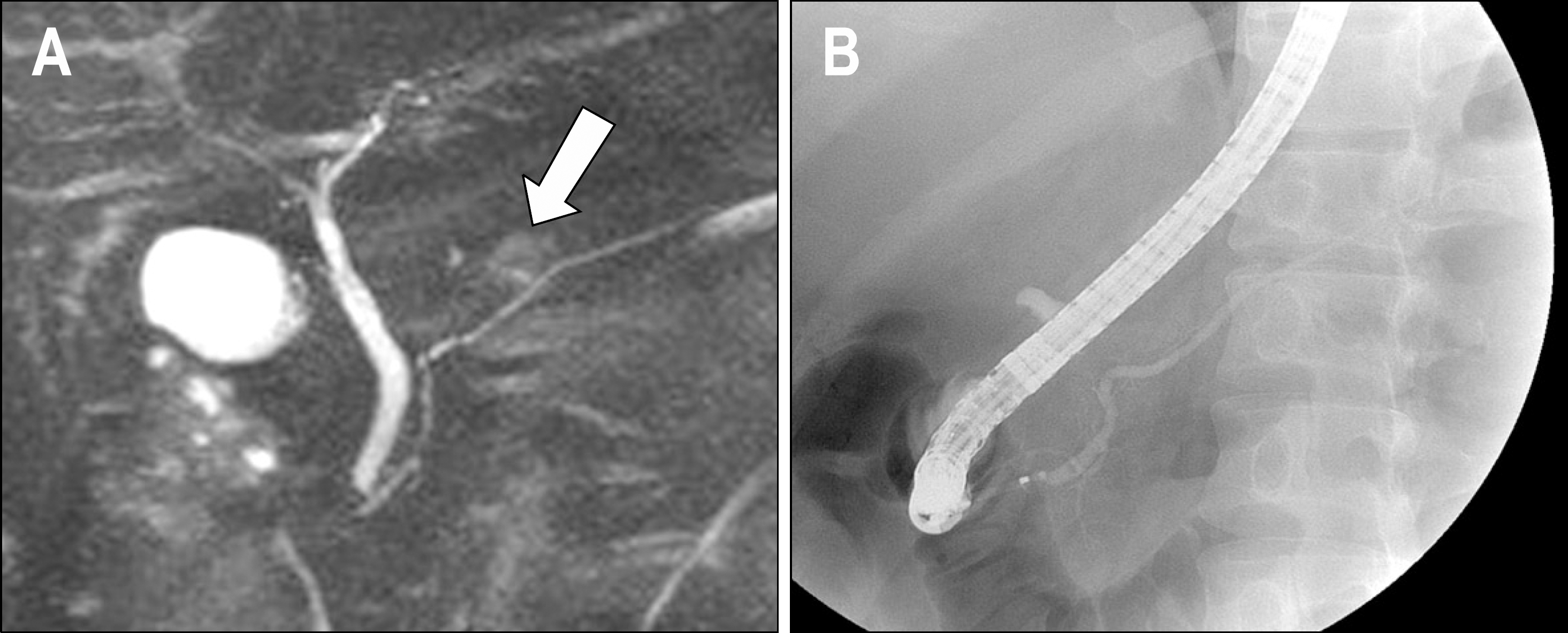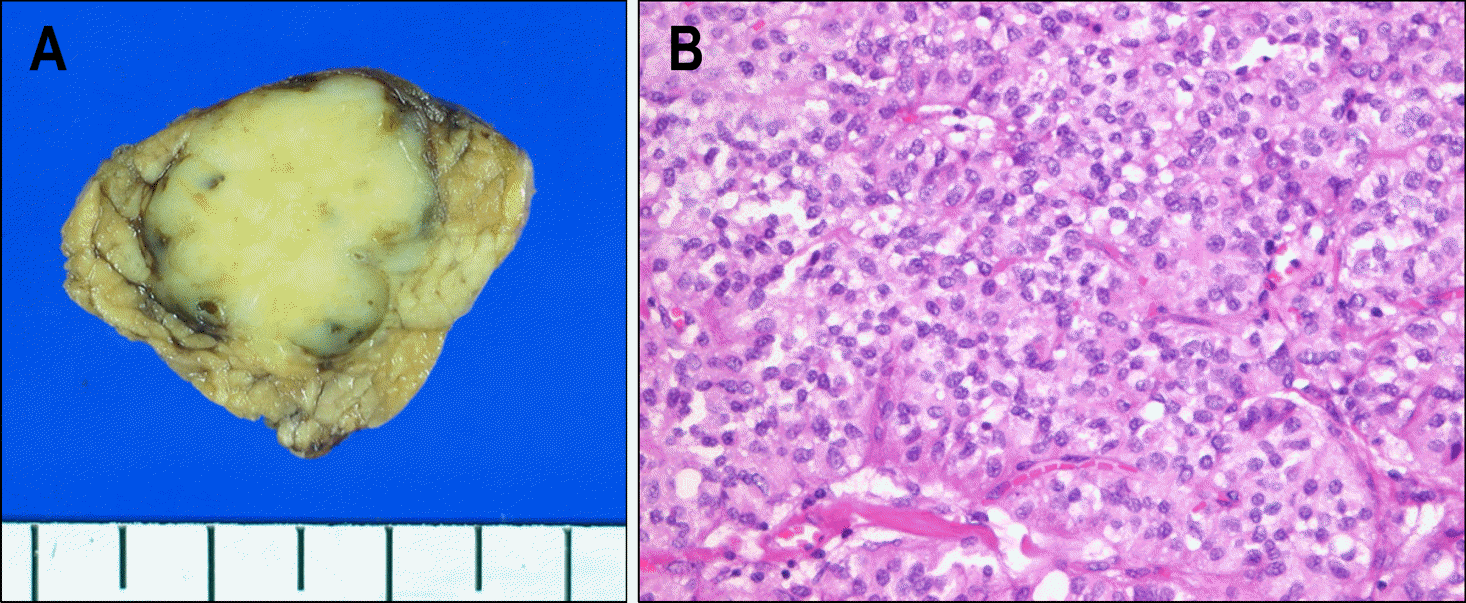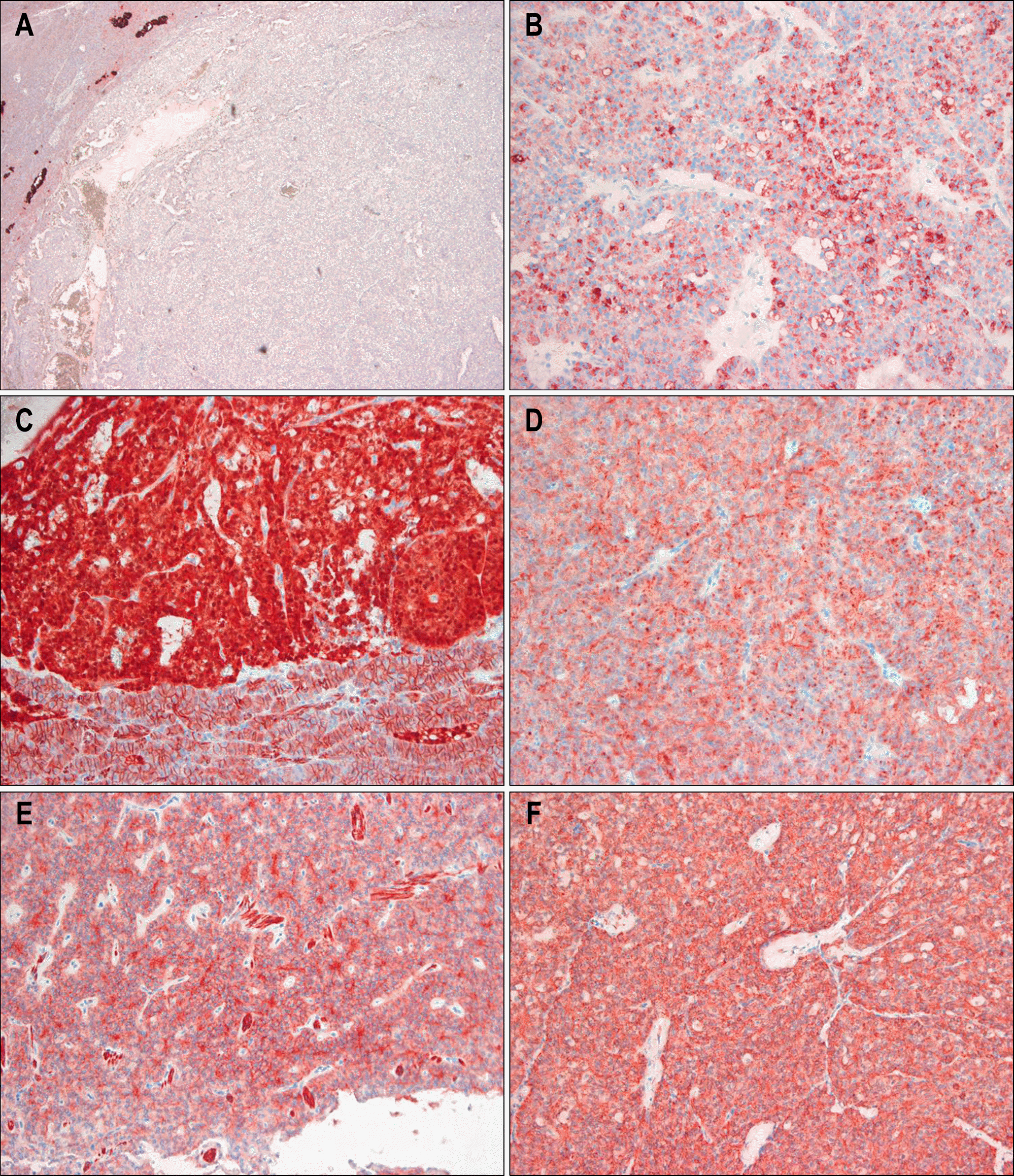Abstract
Solid-psudopapillary tumor is an uncommon pancreatic neoplasm of low malignant potential that most frequently affect young woman. Solid-psudopapillary tumor are histologically, clinically, and prognostically quite distinct from the more common ductal adenocarcinoma. Recently, we experienced a 36-year-old male who was suspected to have extrapancreatic tumor based on atypical radiologic imaging study, young age, and male sex, and finally diagnosed as solid-psudopapillary tumor on immunohistochemical stain examination. We report this case with review of the relevant literatures.
Go to : 
REFERENCES
1. Klimstra DS, Wenig BM, Heffess CS. Solid-pseudopapillary tumor of the pancreas: a typically cystic carcinoma of low malignant potential. Semin Diagn Pathol. 2000; 17:66–80.
2. Crawford BE II. Solid and papillary epithelial neoplasm of the pancreas, diagnosis by cytology. South Med J. 1998; 91:973–977.
3. Nadler EP, Novikov A, Landzberg BR, et al. The use of endoscopic ultrasound in the diagnosis of solid pseudopapillary tumors of the pancreas in children. J Pediatr Surg. 2002; 37:1370–1373.

4. Casanova M, Collini P, Ferrari A, Cecchetto G, Dall'Igna P, Mazzaferro V. Solid-pseudopapillary tumor of the pancreas (Frantz tumor) in children. Med Pediatr Oncol. 2003; 41:74–76.

5. Rebhandl W, Felberbauer FX, Puig S, et al. Solid-pseudopa-pillary tumor of the pancreas (Frantz tumor) in children: report of four cases and review of the literature. J Surg Oncol. 2001; 76:289–296.

6. Papavramidis T, Papavramidis S. Solid pseudopapillary tumors of the pancreas: review of 718 patients reported in English literature. J Am Coll Surg. 2005; 200:965–972.

7. Buetow PC, Buck JL, Pantongrag-Brown L, Beck KG, Ros PR, Adair CF. Solid and papillary epithelial neoplasm of the pancreas: imaging-pathologic correlation on 56 cases. Radiology. 1996; 199:707–711.

8. Dong PR, Lu DS, Degregario F, Fell SC, Au A, Kadell BM. Solid and papillary neoplasm of the pancreas: radiologicalpathological study of five cases and review of the literature. Clin Radiol. 1996; 51:702–705.

9. Tang LH, Aydin H, Brennan MF, Klimstra DS. Clinically aggressive solid pseudopapillary tumors of the pancreas: a report of two cases with components of undifferentiated carcinoma and a comparative clinicopathologic analysis of 34 conventional cases. Am J Surg Pathol. 2005; 29:512–519.
10. Vollmer C, Dixon E, Grant D. Management of solid pseudopapillary tumor of the pancreas with liver metastasis. HPB. 2003; 5:264–267.
11. Machado MC, Machado MA, Bacchella T, Jukemura J, Almeida JL, Cunha JE. Solid pseudopapillary neoplasm of the pancreas: distinct patterns of onset, diagnosis, and prognosis for male versus female patients. Surgery. 2008; 143:29–34.

12. Davtyan H, Nieberg R, Reber HA. Pancreatic cystic endocrine neoplasms. Pancreas. 1990; 5:230–233.

13. Service FJ, Dale AJ, Elveback LR, Jiang NS. Insulinoma: clinical and diagnostic features of 60 consecutive cases. Mayo Clin Proc. 1976; 51:417–429.
14. Sheila S, Hruban RK, Fishman EK. Helical CT of islet cell tumors of the pancreas: typical and atypical manifestations. Am J Roentgenol. 2002; 179:725–730.
15. Scarsbrook AF, Thakker RV, Wass JA, Gleeson FV, Phillips RR. Multiple endocrine neoplasia: spectrum of radiologic appearances and discussion of a multitechnique imaging approach. Radiographics. 2006; 26:433–451.

16. Notohara K, Hamazaki S, Tsukayama C, et al. Solid-pseudopapillary tumor of the pancreas: immunohistochemical localization of neuroendocrine markers and CD10. Am J Surg Pathol. 2000; 24:1361–1371.
17. Adamthwaite JA, Verbeke CS, Stringer MD, Guillou PJ, Menon KV. Solid pseudopapillary tumour of the pancreas: diverse presentation, outcome and histology. J Pancreas. 2006; 7:635–642.
Go to : 
 | Fig. 1.Axial post-contrast CT finding showed a small (about 1.2 cm size) low attenuated mass (arrow) in arterial phase at the pancreatic neck. |
 | Fig. 2.MRCP & ERCP images obtained at the time initial presentation. (A) MRCP image showed an about 1.3 cm sized hypovascular small nodular pancreatic mass (arrow) without ductal dilatation or vascular invasion at proximal body posterior pancreas. T1-weight MR image showed a low intensity, and T2-weight MR images showed a slight high signal intensity. (B) ERCP image showed a normal pancreatic duct without communication with mass. |
 | Fig. 3.Gross pathology and microscopic finding. (A) Gross pathology showed a yellowish round shape and 1.7×1.5 cm sized mass without capsule. (B) Microscopic finding showed a solid areas composed of monomorphic epithelioid cells and papillary patterns (H&E stain, ×100). |
 | Fig. 4.Immunohistochemical stain. (A) Chromogranin staining showed a focal positivity (Immunostain stain, ×400). (B) Antichymotrypsin staining showed a diffuse 3+ positivity (Immunostain stain, ×100). (C) β-catenin was stained of nucleus (Immunostain stain, ×100). (D) CD10 staining was positive (Immunostain stain, ×100). (E) CD56 staining was positive (Immunostain stain, ×100). (F) Vimentin staining showed positivity (Immunostain stain, ×100). |




 PDF
PDF ePub
ePub Citation
Citation Print
Print


 XML Download
XML Download